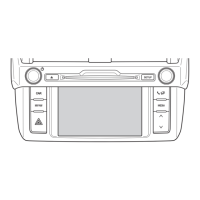50
The gauge indicates the engine cool-
ant temperature when the ignition
switch is on. The engine operating
temperature will vary with changes in
weather and engine load.
If the needle points to the red zone or high-
er, stop your vehicle and allow the engine
to cool.
Your vehicle may overheat during severe
operating conditions, such as:
Driving up a long hill on a hot day.
Reducing speed or stopping after high
speed driving.
Idling for a long period with the air con-
ditioning on in stop-and-go traffic.
Towing a trailer.
NOTICE
Do not remove the thermostat in
the engine cooling system as this
may cause the engine to overheat.
The thermostat is designed to
control the flow of coolant to keep
the temperature of the engine
within the specified operating
range.
Do not continue driving with an
overheated engine. See “If your
vehicle overheats” in Part 4.
The oil pressure gauge indicates en-
gine oil pressure when the ignition
switch is on. Check it while driving to
make sure that the needle is in the
proper range.
If the oil pressure should stay below the
normal range, pull off the road to a safe
place and stop the engine immediately.
Call a Toyota dealer or qualified repair
shop for assistance.
Oil pressure may not build up when the oil
level is too low. The oil pressure gauge is
not designed to indicate oil level, and the
oil level must be checked using the level
dipstick.
Oil pressure gauge
Engine coolant temperature
gauge

